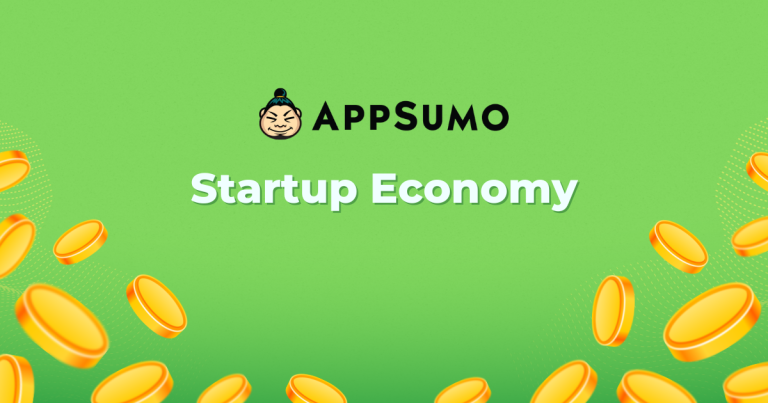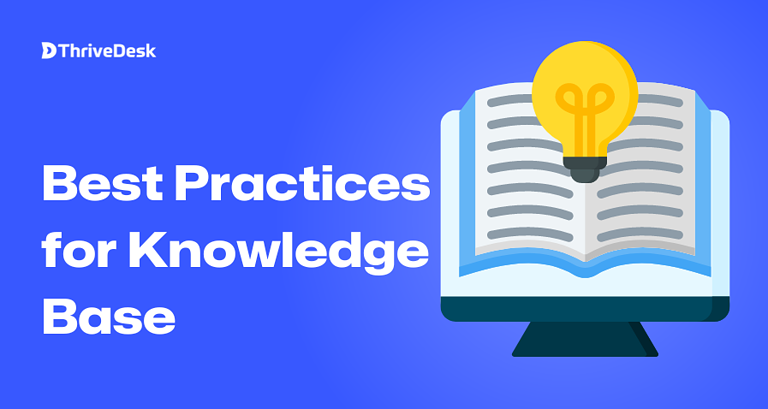You identified a problem in the world of internet, you did some market research and bam! You started your own SaaS company. Things were all going well until you hit a roadblock; or more like traffic congestion!
Now everything doesn’t seem so romantic anymore. You are nowhere near where you wanted to be. Your professional and personal relationships are getting bitter day by day and you’re confused!
Well, rest assured, you are not the only one to have gone through the phase. And, no, it is not too late yet!. You can still turn things around.
SaaS businesses that initially experience rapid growth often go through a phase when things don’t move much. This is the time to heavily focus on taking the business further, hitting as close as you can to the number you had decided earlier.
If you don’t know where to start, we believe this article will give you some context regarding where to look. In this article, we have accumulated 7 things that affect SaaS growth negatively. But before we do that, let us first define what SaaS is, shall we?
Table of Contents
What is SaaS?
Software as a service, or SaaS, is a way to deliver applications over the Internet as a service. Instead of installing and maintaining software, you just access it through the Internet. This frees you from having to manage complicated software and hardware.
It is a model for licensing software in which access to the software is given through a subscription and the software is stored on servers outside the company rather than on servers inside the company. Most people access the service through a web browser, where they log in with a username and password.
SaaS applications are used by a wide range of IT pros, business users, and regular people. There are many different kinds of products, from personal entertainment like Netflix to high-tech IT tools. Depending on the functionality, SaaS products can be marketed to both B2B and B2C users.
[elementor-template id=”17208″]
Basic SaaS Business Model
The SaaS business is growing very quickly. In Gartner’s 2021 Emerging Technology Product Leader Survey, almost half (48%) of the people who put money into data and analytics chose cloud-based software as one of their top three areas to invest in new technologies.
The SaaS business model lets subscribers and other customers use SaaS software for an annual or monthly fee instead of a one-time fee. This type of pricing model lets startups and other businesses in the SaaS industry make monthly recurring revenue while focusing on new features, new products, better service, and other benefits that offer lifetime value to both new customers and existing users. These services are delivered online thanks to cloud computing.
A SaaS company may offer different types of subscriptions for different products or different end users, but the subscription model is the core of the business. Because SaaS companies are hosted on a central cloud, they are in a unique position to update their software all the time and send those updates to users.
This process is much faster for SaaS products than for in-house hardware, which used to require the end user to do a lot of manual work. Customers are more likely to stay with a business that uses the subscription model and regularly updates its software as a service (SaaS).
SaaS companies help with this by building customer success teams into their sales cycle. Even after a customer signs up for an annual or monthly subscription, the customer success team continues to work with and help the customer.
Now, let’s dive in to the wild and wacky world of SaaS pricing models.
First up, we have the “Pay-Per-Use” model. This is the one where you only pay for the exact amount of usage you get out of the service. Think of it like a vending machine – you put in your money, you get your product. Simple and straightforward.
Next up, we have the “Freemium” model. This is where you get a basic version of the service for free, but if you want all the bells and whistles, you have to pay for a premium version. It’s like getting a free sample at the grocery store, but then having to pay for the full size product.
Then we have the “Subscription” model. This is where you pay a flat fee every month or year to use the service. It’s like a gym membership – you pay a set amount each month and then you can use all the equipment and facilities as much as you want.
Finally, we have the “Usage-Based” model. This one is similar to the pay-per-use model, but it’s based on how much of the service you actually use. It’s like paying for electricity or water – you only pay for what you consume.
The 4 Periods of a SaaS Business
Every SaaS business will go through four main stages. Most people understand the Startup phase, and then everyone dreams of the Stable Golden Goose phase, when the money just keeps coming in. Hypergrowth is one of the phases that is rarely talked about, even though it is one of the most stressful times for a SaaS business and can make or break it.
Let’s talk about the four steps:
Pre-Startup
The pre-startup phase for a SaaS (software as a service) business is the period before the company is fully operational and generating revenue. During this phase, the focus is on developing the idea, building the product, and preparing for launch.This stage involves identifying a problem that the SaaS product will solve, conducting market research to ensure there is demand for the product, and creating a business plan.
Additionally, building ,testing and refining the product is also done in this stage. This may involve conducting user testing and making any necessary refinements.
Startup
The startup stage of a SaaS company, also called “product-market fit,” is when your product solves the problem you set out to solve. One of the most important things for a SaaS company to do at this stage is to find and sign up its first customers and give them a good product. This includes getting everything going, programming a working product, and “going to market” with it to acquire your first few customers.
Hypergrowth
If the market likes your product, businesses will likely start using it quickly, which will bring you a lot of growth. Even though this sounds great, it will usually cost you more money because you will need to quickly add more data, storage space, bandwidth, and other technical things to help the new customers.
Remember how customers of SaaS products often like them because they don’t have to build an IT infrastructure for their business? Well, they don’t need to make one because their membership to your SaaS product gives them the backend they need.
Stable Golden Goose
Here, your SaaS business has reached a steady state. You are starting to make a pretty good profit, and getting new customers quickly won’t test the limits of your infrastructure like it does in the hypergrowth phase. You will also learn about “churn,” which is what we are about to talk about.
Many SaaS products are actually pretty good, but many businesses fail because they can’t handle their rapid growth, which can also cause them to fail. In the “Growth Strategies” section of this explainer, we’ll talk a bit about how to deal with this.
[elementor-template id=”17208″]
Importance of steady growth in SaaS startup
- You won’t be able to help your customers without innovative products or services
Customers love it when a product or service goes above and beyond what they expected. Your business will suffer if you don’t make enough money to offer your customers and audience the next best thing.
- Your competition will grow
If you don’t grow your business, you can be sure that your competitors are. If you can grow your business, it means that there is more demand than supply in your market. If you don’t take advantage of this, someone else will.
- You need to move from break even to profit
Start-ups usually need to grow quickly to establish themselves in the market and reach a size where they can bring in enough money to cover their costs and start making a profit.
Things that affect SaaS growth Negatively
SaaS companies can have a hard time growing if they don’t have the right marketing strategy in place. A lot of things affect SaaS growth, but some of them are more negative than others. For instance, if the company cannot provide a good customer service experience, this will also affect its growth negatively.
Another common mistake that SaaS companies make when it comes to marketing are not being aware of how much they should be spending on marketing and not investing enough in their website.
There are many things that affect SaaS growth negatively, but the most important ones are:
Underpricing the Product
Underpricing can be a real bummer. Your customers might think your product is cheap and crap, making it tough to convince them to buy. It’s like trying to sell a used car with a “low, low price!” tag on it – they’re going to assume it’s a piece of junk.
Often, it can also mean less cash in your pocket. SaaS businesses have all sorts of expenses, like hosting and server fees, that need to be paid for. If you’re not charging enough for your product, you might not make enough money to cover those costs and still turn a profit.
It’s like trying to run a restaurant but not charging enough for the food – you’re going to go broke pretty fast.
When you underprice your product, you might find yourself in the midst of a price war. Other businesses might also start underpricing their products in an attempt to win customers.
This can quickly turn into a competition of who can offer the lowest prices, leading to reduced profit margins for everyone. It’s like a race to the bottom – nobody wins in the end.”
Too Many Goals
A SaaS (Software as a Service) company might not grow as well if it has too many business goals and no clear vision.
When a company has more than one goal, it’s hard to figure out what’s most important and where to put resources. This makes it hard to make progress in any one area. This can lead to missed opportunities and goals, which can slow the growth of the company.
A lack of focus and vision can also make it hard for employees to know where to go and what to do. Without a clear vision and plan, employees might not know what their role is in the company or how their work helps the business as a whole.
This can make people less interested and productive, which is bad for the company’s growth.
To get around this problem, SaaS companies need to set their business goals in order of importance and focus on a few key growth areas. This lets people focus their efforts and use their resources better.
A clear vision and plan can also give employees direction and motivation, which can lead to more engagement and productivity. This can help the company grow and be successful in the long run.
Lack of Collaboration
When different teams in a company don’t work well together, it can hurt the growth of a SaaS business.
When teams don’t work well together, there is often a lack of coordination and communication, which can lead to missed deadlines, duplicated efforts, and goals that aren’t in line with each other.
This can make team members confused and upset, and it can also make it harder for the company to respond to customer needs and changes in the market.
Because of this, the company may find it hard to keep customers and find new ones, which could slow its growth and bring in less money.
To avoid this problem, it is important for SaaS businesses to set up clear ways for teams to talk to each other and work together. This can be done by having regular meetings, using tools for managing projects, and coming up with a shared vision and goals for the company.
By making it easier for teams to work together and coordinate, SaaS businesses can get past the problems caused by poor collaboration and grow in a sustainable way.
No Solid Lead Generation and Conversion Strategy
Having a solid lead generation and conversion strategy is crucial for the growth of any software as a service (SaaS) business. Without a clear and effective plan in place, a SaaS company will struggle to attract and retain customers, leading to slower growth and potentially even failure.
One of the most important parts of a strategy for getting leads and turning them into customers is figuring out who the target audience is for the SaaS product and making marketing campaigns to reach them.
This could mean using methods like content marketing, social media advertising, email marketing, and search engine optimization (SEO) to generate leads and attract potential customers.
Once you have leads, you need a plan to turn those leads into paying customers.
This could mean giving potential customers free trials, special discounts or deals, or personalized support and guidance to help them make a decision.
Without a good strategy for lead generation and conversion, a SaaS business may find it hard to get a steady stream of new customers. This could slow growth or even cause the business to fail.
For growth and success, it is important for SaaS companies to focus on making a complete and effective plan for lead generation and conversion.
Excessive Expenditure in the Early Days
Excessive expenditure in the early days of a SaaS business can slow down its growth in several ways.
First of all, a SaaS business can quickly run out of money if it spends too much on gadgets, office setup, or even employees. This can make it hard for the business to put money into growing and improving its main product or service, which can make it harder for the business to get a foothold in the market.
Second, spending too much can cause problems with cash flow, which can make it hard for the business to pay its bills and meet its other financial obligations. This can put the business’s finances in danger, making it vulnerable to outside threats like competition or changes in the market.
Third, spending too much can give a business a false sense of success, which can make it make bad decisions. For instance, the business may be tempted to spend money on more resources or employees without first figuring out how they will affect the business. This can lead to waste and inefficiency.
Overall, if a SaaS business spends too much in its early days, it can hurt its ability to grow and succeed on the market. To increase their chances of success, SaaS businesses need to carefully look at their costs and decide where to put their money first.
Taking Help from Friends
One major factor that can slow down the growth of a SaaS (Software as a Service) business is the reliance on friends for certain tasks or services. While it may seem like a cost-effective solution to utilize the skills and expertise of friends, it can actually hinder the growth of the business.
For one, relying on friends for specific tasks or services can lead to delays in completion. Friends may not prioritize the work for the business as much as a professional would, leading to longer turnaround times and missed deadlines.
This can cause delays in product development and marketing efforts, hindering the growth of the business.
Additionally, relying on friends for business tasks can also compromise the quality of work. Friends may not have the same level of expertise or experience as professionals in the field, resulting in subpar work that may not meet the standards of the business.
This may lead to customer dissatisfaction and a negative reputation for the business, hindering its growth.
Also, asking friends for help with business tasks can make personal relationships awkward and tense. If the work isn’t done well enough for the business, it can be hard to talk about it and find a solution without hurting feelings or hurting personal relationships. This can lead to more problems and slow the business’s growth.
Being a Copycat all the Time
Entrepreneurs who only follow the footsteps of others and lack originality in their approach to building a successful SaaS business are likely to face challenges in achieving growth. This is because the SaaS market is highly competitive, and in order to stand out and attract customers, a business needs to offer something unique and valuable.
By simply copying the strategies and tactics of others, entrepreneurs are unlikely to be able to differentiate their SaaS offering and create a compelling value proposition. This can lead to difficulty in generating interest and acquiring customers, resulting in slow growth.
Furthermore, without a clear vision and direction for their SaaS business, entrepreneurs may struggle to make strategic decisions and adapt to changing market conditions. This can prevent them from seizing opportunities and staying ahead of the competition, further hindering growth.
In order to overcome these challenges and drive growth, entrepreneurs need to develop a unique and differentiated SaaS offering, backed by a clear and compelling vision. This involves conducting market research, identifying unmet customer needs, and developing innovative solutions to address those needs. By taking these steps, entrepreneurs can position their SaaS business for success and avoid the pitfalls of slow growth.
Wrapping Up
Most SaaS companies will eventually hit a point where their growth stops. Even though growth probably won’t start up again in a few weeks, it’s important to start making changes today.
You will be required to implement targeted marketing and sales tactics to attract and retain customers by leveraging social media and other digital channels.
Additionally, regular measurement and tracking mechanisms need to be set to assess the effectiveness of growth strategies and make adjustments as needed.
Overall, the key is to be proactive and strategic in identifying and addressing potential barriers to growth in order to drive sustainable and long-term success.





